How to repair car brakes
Nothing hurts more than having car brake trouble and being stranded because there is no one to help you and you do not know how to repair either. It is even worse when your mechanic takes you for a ride. This post will give you the best brake repair and service tips so that you can repair your brakes like a pro even better than some mechanical workshop.
How do you fix brakes on a car?
How to change brake pads and rotors(front and rear)
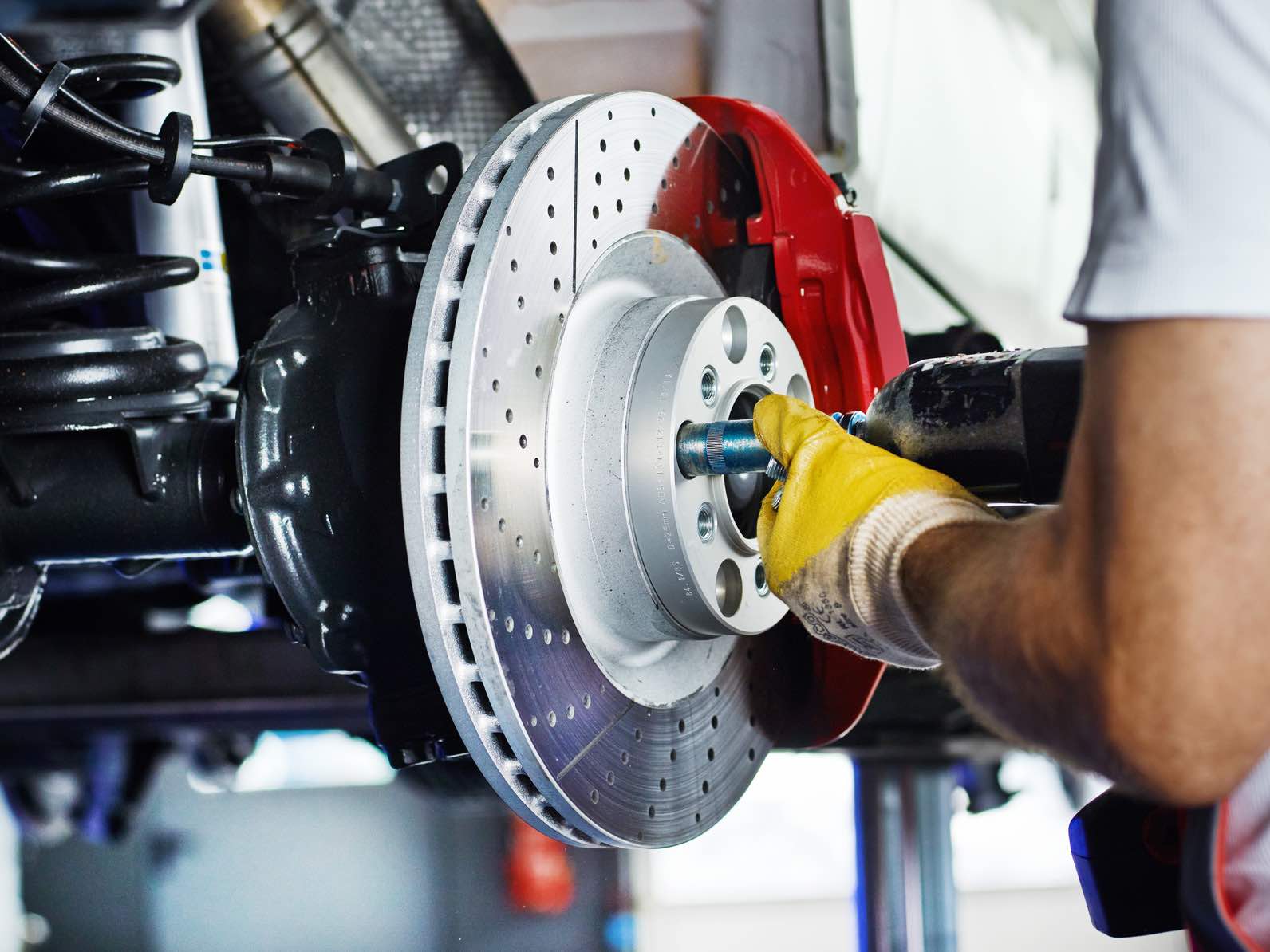
Photo on dealersync.com
Whether you buy an old car, a new one or even lease, maintenance is unavoidable. At some point, you will have to change the car brake pads or rotors. While many will let a mechanic sort the problem, sometimes mechanics could be expensive, or you may get stuck at the mechanic may not be available. Here is a guide which will help you change your car brake and rotors with no inconvenience.
Precaution 1: Ensure the car is cooled down. The pads, rotors, and calipers could be extremely hot, and they may not be safe to touch.Step 1: Ensure the car is raised so that you can be able to access the brake rotors and pads.Ensure the car is level when raising it. Check your car manual for proper jacking points since they differ from one car to another.Step 2: Remove the wheels. The brakes will now be accessible.Step 3: Remove the caliper to get to pads and rotors. Hold the caliper pin in place using a wrench. To remove the two bolts at the back of the caliper use wrench socket.
Precaution 2; Make sure the caliper does not dangle or hang from the brakes lines as this could cause damage.Step 4: You can now remove the pads. Step 5: Remove the caliper bracket itself. Now you are only left with the rotors to be able to replace the pads and rotor.Step 6: For the rotors, you will have to use grease, screwdriver and some light taps from mallet this is the case as the rotors maybe snug.
Precaution 3; Ensure there is no residue left, before replacing the new rotors. You can do this by spraying the rotor with some handy dandy-brake cleaner. Step 7: You can now install the pads and replace the hardware.
Wow, that was not as hard as you thought-job done! However, there are a number of other things that should be checked or cleaned, but the good thing is that s optional. Here are some crucial tips on what you can do:1. Clean the rotor hub with a wire brush to remove rust which could have formed over time2. Check your car brake fluid level and add some if necessary. If finished replace the brake cap reservoir3. your new brake, you can do this by going no more than 5 mph (8.0 km/h) on quit resident street brake like normal. If the car seems to stop normally, then there are no issues with brake pad installation, and you can confidently drive.
How much does it cost to get a brake job?
Replacing brake pad and rotors cost
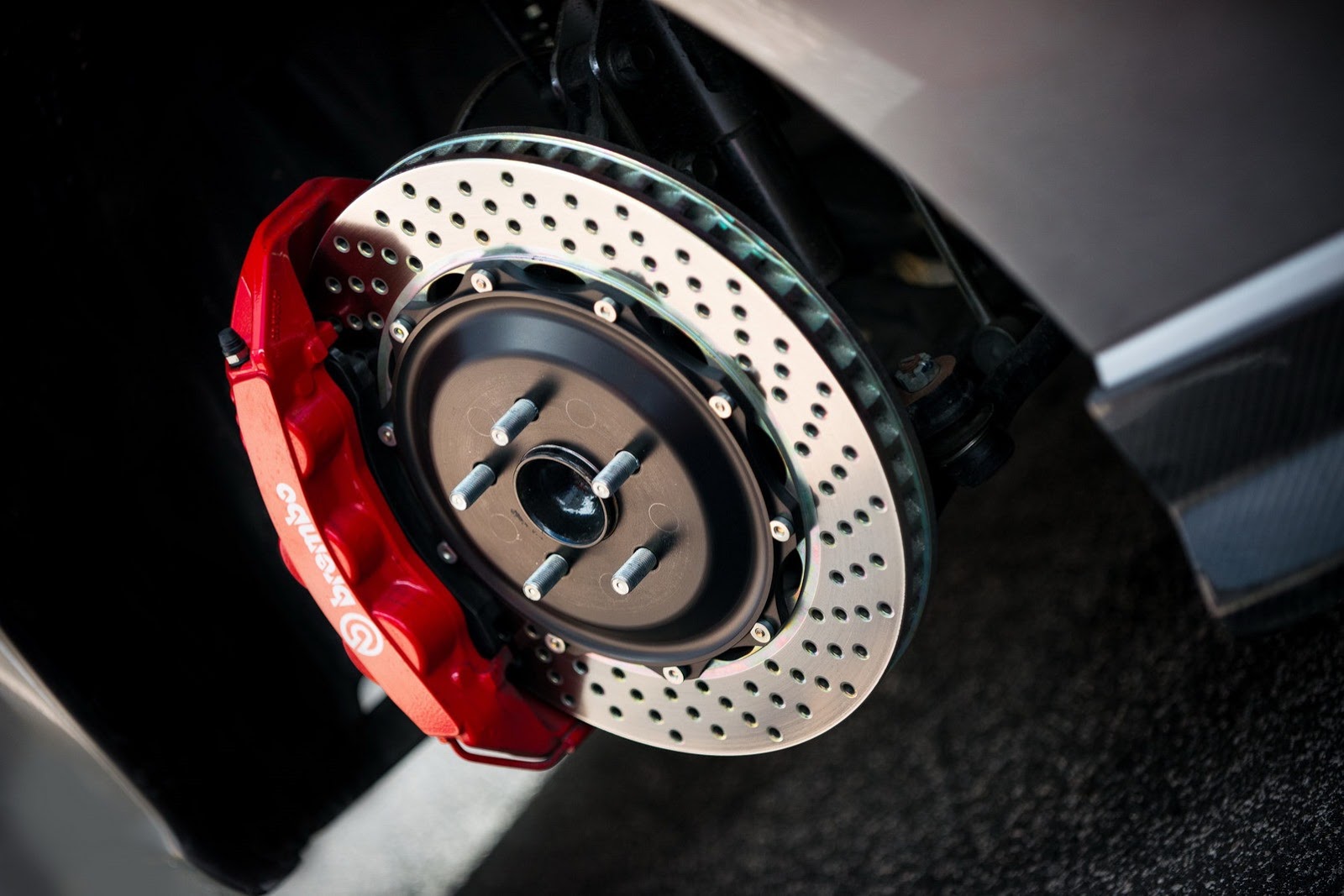
Photo on driveroo.com
How much does a car cost? This question is hard to answer as the question how much does it cost to get a brake job. This is because it depends on so many variables.It is interesting to note that federal government sets quality standards for brakes installed in new cars, but does not set any regulations for brake pads and rotors repair.Despite the many variances below is an average cost for pads repair.
Brake Pads Only
To get your pads replaced by a professional mechanic it will cost you an average of $100 to $ 300 per axle. This is a total of labor cost and pads cost. Pads price range from $80 to $150 for a set of four (one axle ) Depend on quality and brand name. Low grade, medium grade or top quality. Now price is bound to go up if you need extra parts like calipers and horses.
Pads and Rotors Repair
To replace your rotor including pad replacement by a professional mechanic, it will cost you an average of $250 to $500. The variance in price is similar to that of brake pads, labor, type quality and brand of pads and rotors. The price of rotors ranges from $30 to $75 each. For higher performance rotors the price could go up to $100+.
Calipers Replacement
If the calipers too need to be replaced this could cost you $190 to $300. Calipers cost $70 to $130 for normal model or $ 100 to $300 + for higher end vehicle. Rear calipers are more expensive than front calipers.
Generally, anywhere a complete brake repair job for one wheel will cost you $300 to $800 depending on:– Cost of labor in your area- Brand, quality and type of pads or rotors and calipers- Year, model and type of your vehicle- Whether your repair is done in an independent mechanic or dealership.The cost is inclusive of pad replacement, new calipers, rotors and labors cost. But if all tops of the line part need to be replaced the price can easily go up to $1000+.
What do you need to change your brakes?
Brake pad replacement
If you hear a nasty screech sound when you press the brake pedal of your car, it is time to change the brakes. Here is how with 15 simple steps.
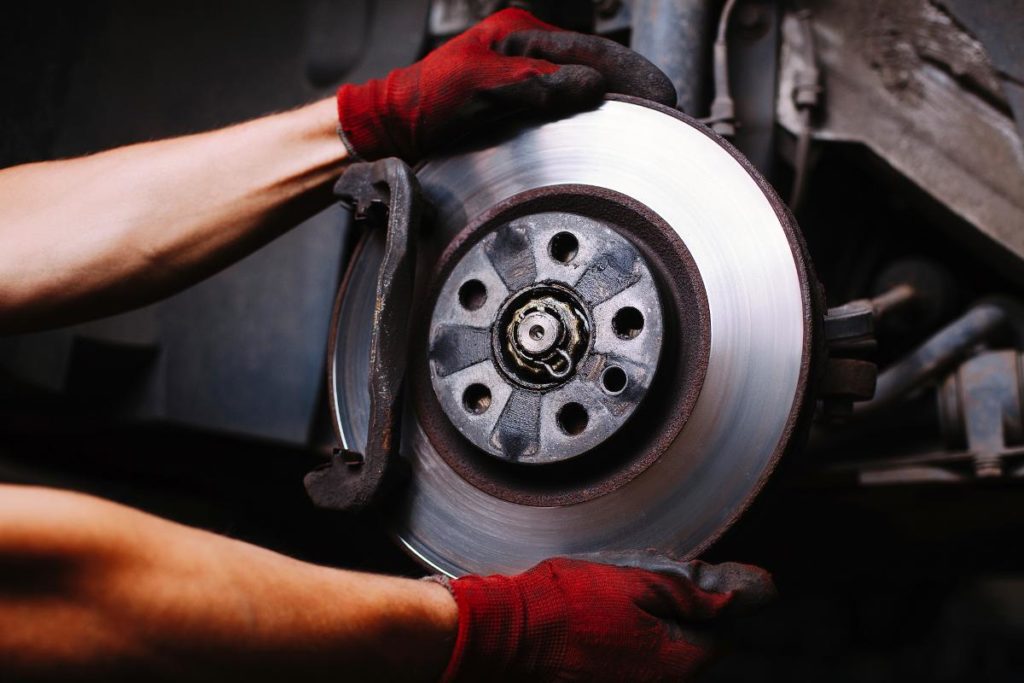
Photo on mastermechanic.ca
Step 1: Acquire tools
You can perform the brake service of your car with the following tools from your garage:– Ratchet (3/8 ’’ and 1/2 ’’)- 1/2 ’’ breaker bar- 3/8 ’’ assorted extensions- 3/8 ’’ sockets, assorted, and 1/2 ’’ socket assorted- Open-ended wrenches, assorted- Torx sockets, assorted- Hex sockets, assorted- Reverse Torx sockets, assorted- C-clamp- Hydraulic Jack- Jack stands- Pry Bar- Wire brush- Gloves- WD-40
Step 2: Purchase brake pads and rotors
Pads and rotors are available in any auto parts store or car dealership. Choose the best pads for your car one that has the best feel and longest protection against brake fade.Let the dealership know the model of your car.You should also choose rotors and pads which are within your price range.For rotors choose the ones with greatest quality control. Brembo rotors are the most common, they are inexpensive, and they work great.
Step 3: Loosen lugs
Remember you are loosening the lugs and not removing them. Engage the emergency brake to get the best access to the front lug nut. Ensure the lugs are loose enough in a way you can remove them off with a regular ratchet. For the rear, put bricks behind the front wheels and engage the emergency brake to give yourself the best chance to loosen the lug.Release the emergency brake when the wheel is off.
Step 4: Raise the car
Place the hydraulic Jack under either of the car frame rail or factory jacking points on the side of the car. Ensure the weight of the car cannot shift-the car should be level by placing jack stands under the car and rest the car on the jack stands.You can now remove the wheels.
Step 5: Loosen caliper
Remove the bolts on the caliper, and it will be able to slide out.If the caliper is not sliding out easily use a pry bar to pry it out. A flat head of screwdriver can also be used to pry the caliber. Secure the caliper in a place it does not hang to prevent any damage.
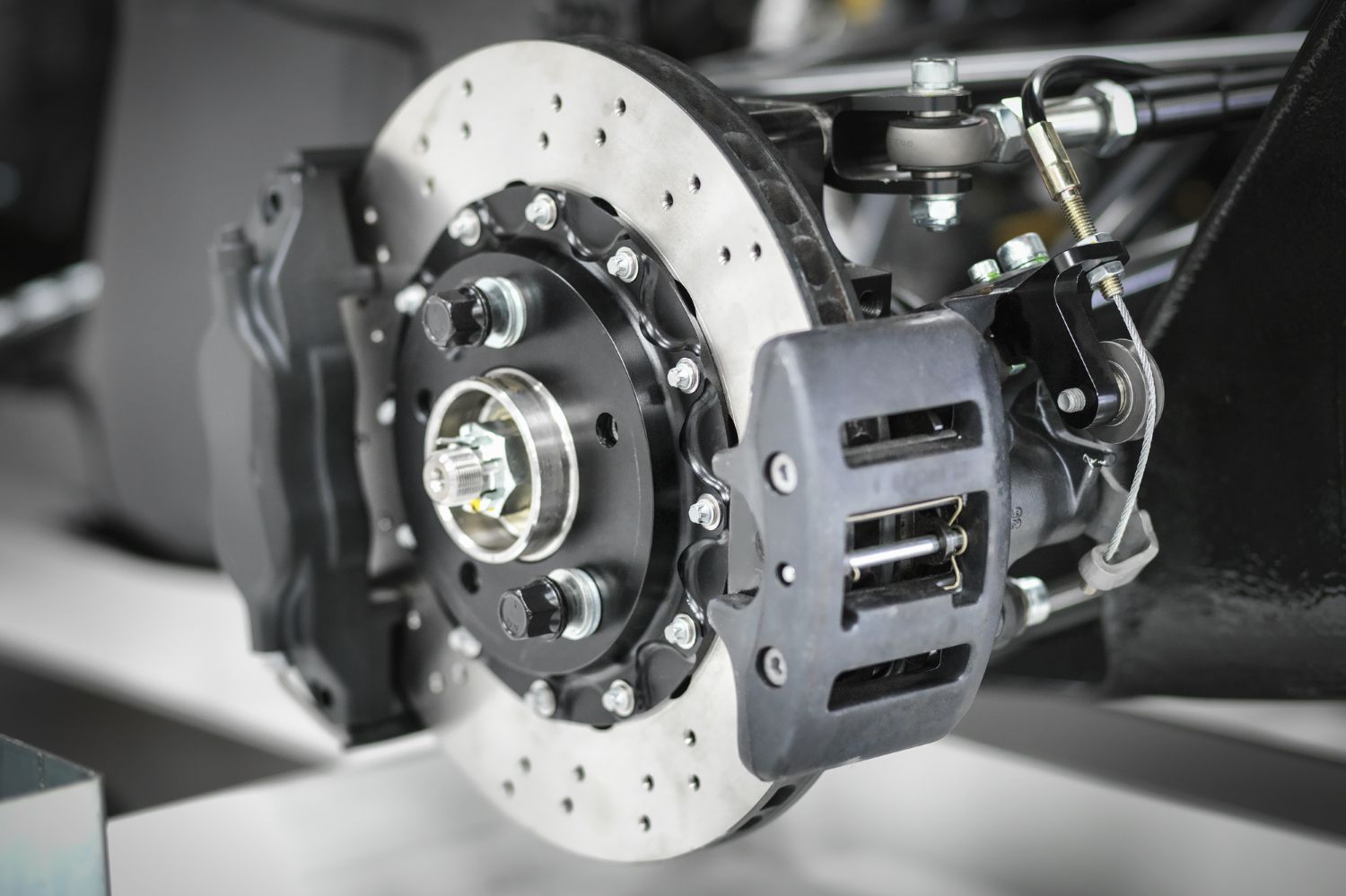
Photo on thoughtco.com
Step 6: Remove caliper carrier
Remove the bolts on the rear of the hub which keeps the carrier caliper on. The bolts are a bit tight, so you will have to use a beaker with a mallet.
Step 7: Remove the rotor
Whack the rotor a few times with the hammer, and it will surely come out. For an old car due to rust instead of whacking the rotor with a hammer there could be threaded holes which you can force bolts through, and the rotor will be out.
Step 8: Install new rotor
Brush the new rotor with a wire brush to remove rust. This will prevent collusion in the future. You can use WD-40. Use a rug nut and an open-ended wrench to hold the rotor when settling down the rest of the components To remove oily packaging residue from the rotor use brake cleaner to wipe it off.
Step 9: Assemble carrier
Change the carrier bolts and tighten them using a breaker bar.
Step 10: Compress caliper
Use the C-Clamp and old brake pads to compress the caliper piston until the piston is flush with the housing of the caliper.
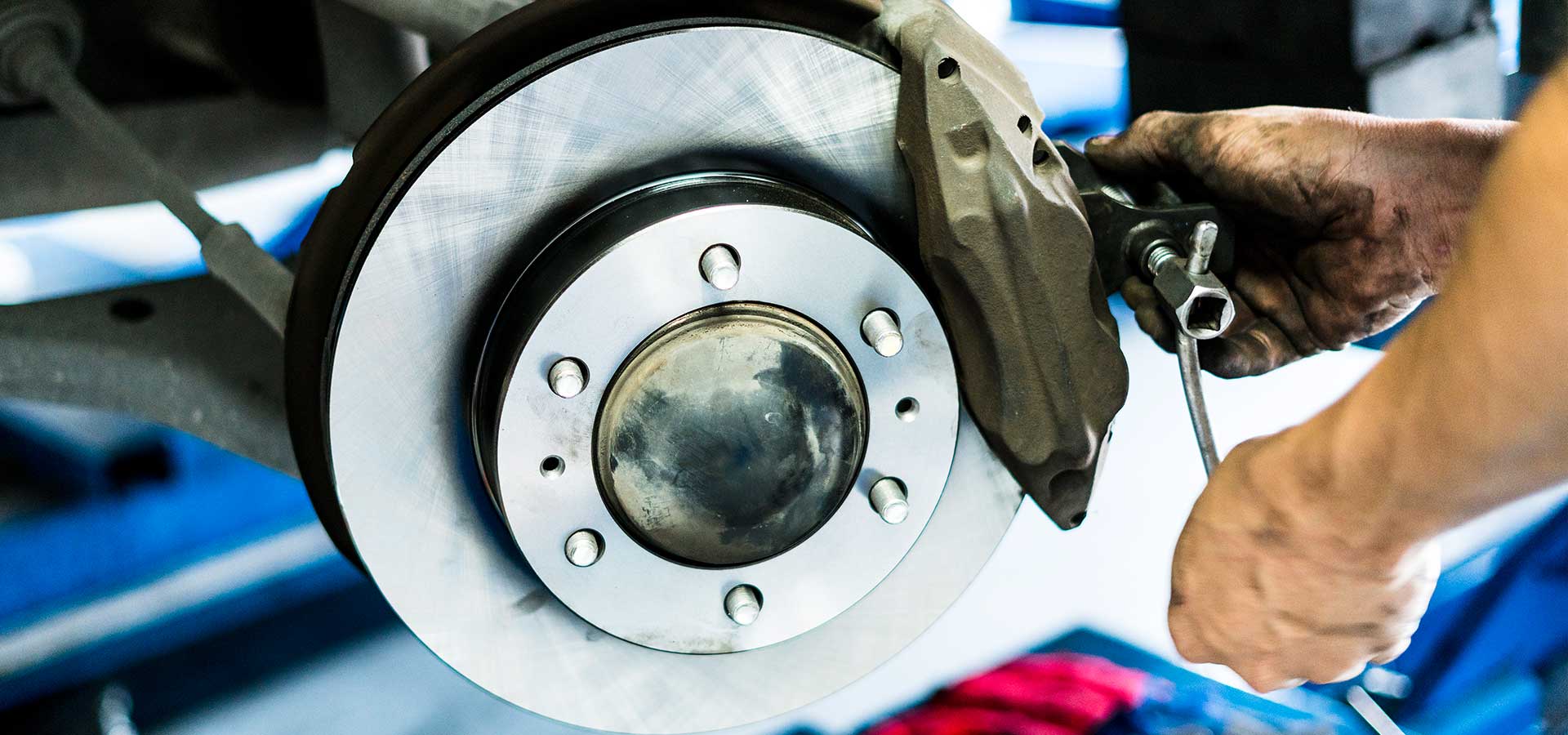
Photo on tequestatire.com
Step 11: Install pad and caliper
You can now install pads in the carrier. To ensure smooth operation use grease on the outside of the pad. Install the caliper bolts making sure the caliper moves without binding. Then tighten the bolts and check that you have done everything right.
Step 12: Put the wheel back
When the car is on the ground, use the star motion to tighten the lug nuts. Use the manual to see the specifications for your vehicle. At this point, you can use a torque wrench or a breaker bar.
Step 13: Repeat the procedure for all 4 wheels
Step 14: Pump the brakes with pressure
Pump the brakes until pressure is reached. You should be able to feel pressure within the three brakes of the pedal.
Step 15: Start your car and test your new brake pads
To test your new brakes pads, accelerate to 60 MPH on a highway and gradually slow to 40 MPH repeat this for a few times and then do a reverse. Then drive normal. If there is no noise from your brakes, then you have successfully repaired your pads and rotors.
How frequently do you need to change your brakes
5 signs that you need to replace brake pads
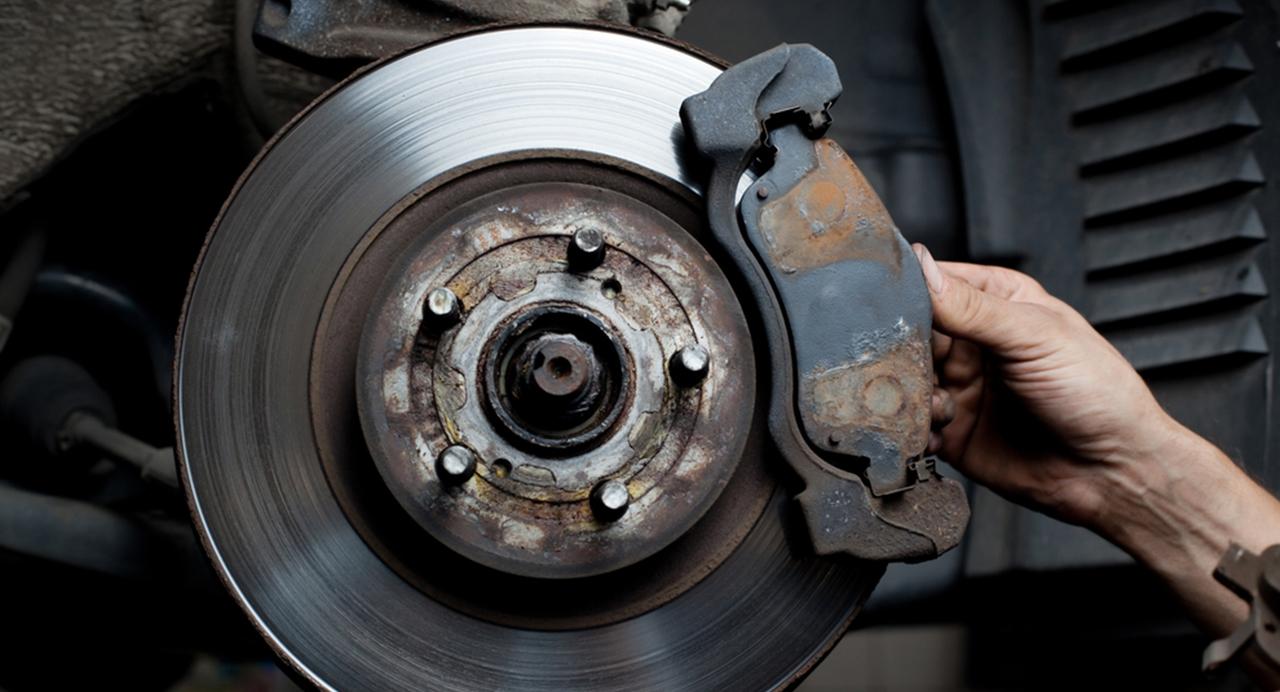
Photo on carfromjapan.com
If you are having a nice drive on a highway and listening to your favorite music, then suddenly you need to stop, and your car takes almost like a century to come to a standstill, then you know you need to have brakes checked. As much as we love cars, brakes are the least of what makes a car beautiful, especially from the outside. But they are the most crucial part. Apart from the break failure signs that we all know, the car taking longer to stop and brake light appearing on your car dashboard, below are other signs that could indicate your car brake need service.
The thickness of brake pads
Rarely do we check if the brake pad is wearing out. Over time the pads wear out making slowing down of your vehicle less effective. All you need to do is check between the spokes of your wheel to spot the tiny metal rotor inside. Look around the outer edge for the metal caliper. The pad is located between the caliper and the rotor.Generally, a pad should be at least one-quarter thick of an inch. If this is not the case for your pad, no unless you want to be facing a close look at death on the road you might want to have them changed.If you can not see the spokes through the car wheel you will have to remove the tire to see the rotor and the pads. If you see grooves or pits it might also be time to replace your brakes.
Harsh grinding sound
Well, this one of the reasons why it is not good to drive with your earphones on and listening to music. Well the harsh grinding sound of car brakes which need repair can be heard even with the wind on but possibly not when you are listening to your favorite music If the brakes have completely been used, when you apply them the metal of the calipers grinds against the metal of your rotors. This is not only a problem in stopping or slowing down your car but you could also damage your car.
Pulling
In this scenario, your car will feel like it wants to make right or left turns while you are driving or braking.The cause of the pulling force might be a stuck caliper. This is because the force will cause friction on one wheel and not the others. Hence you can pull the wheel where the calipers are not stuck but not the other.Pulling could also happen in case of uneven brake pads or collapsed brake hose. Nevertheless pulling does not always indicate brake failures, your tires could be worn out or even poor alignment. Therefore it is necessary to take your car to a mechanic shop for full check out.
Vibrations
If your brake pedal pulses rapidly with quick grabs the system applies to the rotor to slow down under normal braking circumstances then you have a problem.Rotors only warp when they are under extreme stress for example in an emergency stop. So if you have not stressed your brakes recently and you hear vibrations in the pedal, have your brakes checked or take the car to a mechanic.
Temperamental pedal
A pedal which goes practically to the floor before engaging the brakes could indicate worn out pads or a problem with the brake system.The brakes could also grab immediately at the slightest touch. This could indicate an evenly worn out rotor or dirty brake fluid.